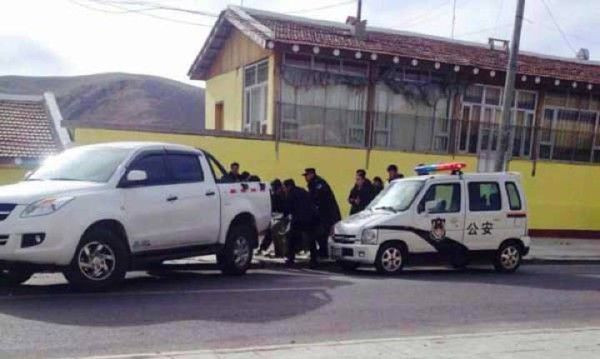Tibetan Woman Self-Immolates And Dies In Protest Of Chinese Rule; Family Apprehended By Police For Questioning

A Tibetan woman who set herself on fire in protest of China’s control of Tibet died, according to groups close to the matter. Tsepe Kyi, a 19- or 20-year-old woman described as a nomad from Sichuan, a province neighboring Tibet in China’s west, is the 135th person since 2011 to self-immolate in protest of Chinese policies in the contested region. Photos and a video of the self-immolation available on LiveLeak show Tsepe’s charred remains burning on the sidewalk and two police vehicles later moving her remains.
Tsepe self-immolated at around 2 p.m. local time on Monday, in Meruma, a town near where she reportedly lived, according to BNO News. She had reportedly not attended school at all and lived as a nomad in the region with her family.
Both of Tsepe’s parents and her brother were reportedly taken in by police for questioning; it is unclear whether they have been released. Those with knowledge of future self-immolations can face jail time in China, and some have been jailed for 15 years, according to Radio Free Asia.
Chinese government-run news outlets did not report Tsepe’s self-immolation. The International Campaign For Tibet, an independence advocacy group, quoted “Tibetan sources in exile” as saying that Internet access and cell phone service were blocked in the area shortly after Tsepe’s self-immolation.
A 33-year-old man self-immolated last week outside a police station in Gansu, a province in north-central China, according to the New York Times. The town where he set himself on fire, Xiahe, is reportedly a popular destination for Chinese tourists.
Kunchok Tseten, a Tibetan father of two, set himself on fire in December 2013 in Meruma, where Tsepe self-immolated. Clashes erupted as locals tried to stop police from removing his body following the self-immolation. Tseten called for the Dalai Lama and other Tibetans in exile to return to the semi-autonomous region of China.
© Copyright IBTimes 2024. All rights reserved.





















